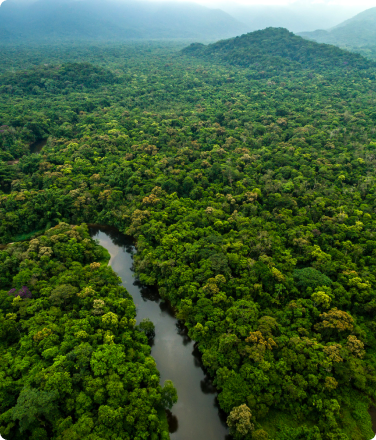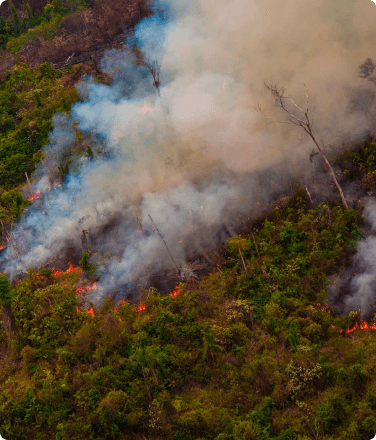Forest monitors collect tree samples for the World Forest ID catalog. These samples help trace the origin of wood—a crucial tool to fight illegal logging and wood trade.
IMAGE CREDIT: Sacha Cine / Rainforest Foundation US
- Rainforest Foundation US hosted events in the Peruvian Amazon to develop four pilot programs led by Indigenous communities to scale up conservation strategies.
- The Indigenous Tech Camps brought multiple Indigenous organizations together with academics, government officials, and international ally organizations.
- In addition to equipping regional Indigenous organizations with data visualization tools, communities received training, funding, and support through new strategic partnerships.
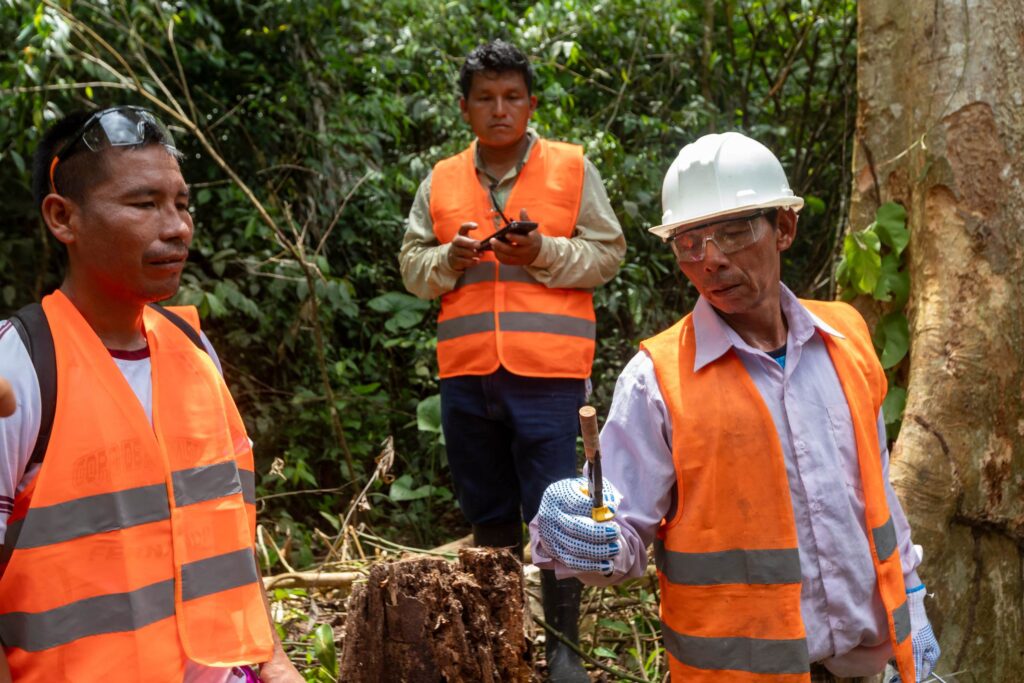
Rainforest Foundation US hosted a series of multidisciplinary training events in September and October called Indigenous Tech Camps throughout multiple cities in the Peruvian Amazon, with the support of the U.S. Embassy in Peru. These events were designed to scale up Indigenous-led conservation strategies and showcase new technologies that can be used by Indigenous partners to protect their rainforests. Indigenous Tech Camps are unique because they highlight Indigenous projects, issues, and solutions, and foster an interactive, egalitarian learning environment. This approach establishes a platform where tech firms and Indigenous communities collaborate as equals, each contributing to solutions for forest protection.
The Indigenous Tech Camps brought together more than seventy people from across the region, including Indigenous groups, academics, government officials, and international NGOs. Communities presented and implemented four pilot programs over the six-week span between events. The first meeting took place in Iquitos, Peru, on September 6-7, followed by a second gathering in the city of Pucallpa on October 17-18.
One of the technologies highlighted was the World Forest ID sampling system. Through a partnership with the United States Forestry Service, tree samples collected by Indigenous forest monitors supported by RFUS and partners are entered into the World Forest ID catalog, which helps trace the origin of wood through DNA and chemical analysis. Indigenous forest monitors from Sumac Allpa and San Fernando communities were trained in sample collection to add to the World Forest ID database. This makes it possible for governments to track and prosecute criminal logging operations, while also holding businesses accountable for sourcing illegal timber. This technology is emerging as an essential tool for Indigenous land defenders to combat illegal logging and deforestation in the legal arena, armed with hard data.
“The contribution of Indigenous peoples to science is crucial for understanding the territory, traceability, and the origin of forest resources.” – Rolando Rodriguez Arevalo, RFUS staff and technical advisor to the Regional Organization of Eastern Indigenous Peoples (ORPIO)
Betty Rubio, a forest monitor from San Fernando, said, “As a woman, the experience is very compelling because we believe that women can also do this type of work. I find it commendable that this training is being conducted within the communities and with the community members themselves.”
Another exciting technology featured was the Global Forest Watch (GFW) Map Builder tool from the Environmental Systems Research Institute (ESRI) and RFUS partner Global Forest Watch. Mapbuilder is a powerful software that allows Indigenous communities to turn their spatial data and imagery into an immersive story with interactive maps. These maps, for example, can track territorial threats and build out aspirational data. This means they can visualize and plan for areas they aim to get formally recognized as theirs in the future. So far, three Indigenous organizations have started creating maps for data visualization and forest defense. AIDESEP-CIPTA’s Story Map of their territory demonstrates what is possible with this new tool.
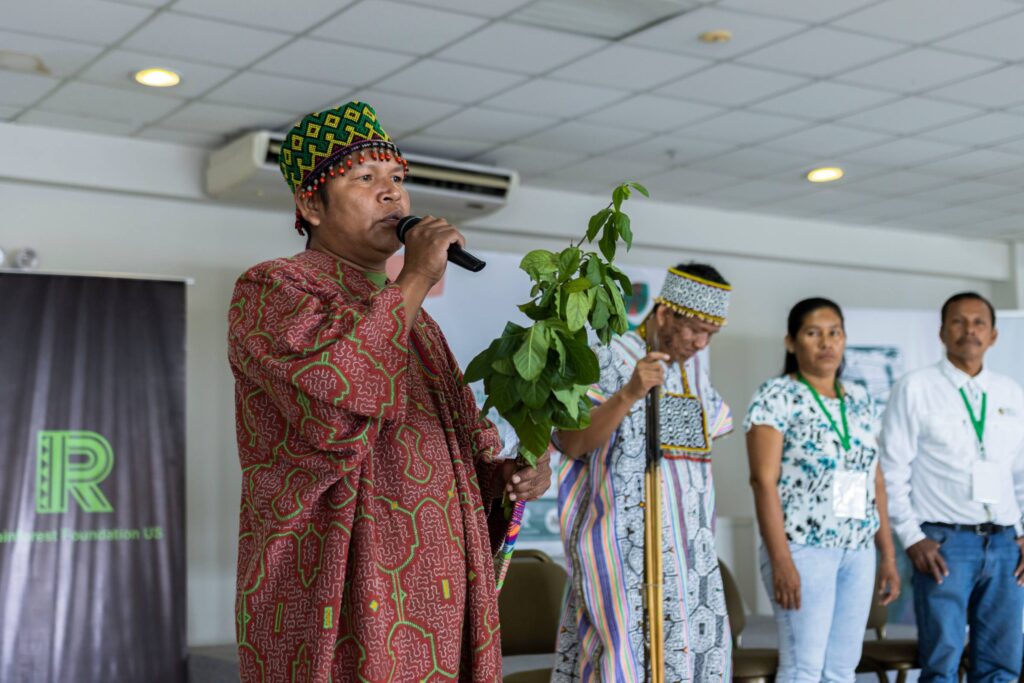
The Indigenous Tech Camps started in 2019 as a series of small gatherings for Indigenous organizations and allied NGOs to share experiences. However, in just two years, they have evolved into a significant regional event. The most recent Indigenous Tech Camps provided Indigenous organizations with a platform to present their initiatives to both national and international audiences—including government entities—while at the same time fostering strategic collaboration and alignment between communities.
“In times of crisis, promoting regional cooperation with Indigenous peoples is urgent. It is important to continue supporting the efforts of Indigenous peoples to design and implement their own collaboration strategies that are culturally appropriate. This approach helps build collective solutions to expedite the implementation of Indigenous peoples’ rights and the defense of the Amazon rainforest.” – Wendy Pineda, Project Coordinator for RFUS in Peru
The Tech Camps are just the beginning of what we hope will be an ongoing program that will be scalable in other regions. Some 2023 impacts include:
Data Visualization:
- Three Indigenous organizations are now equipped with data visualization tools to champion forest defense.
- AIDESEP-CIPTA: Developed a Story Map on land titling.
- ORAU-TSITORI: Introduced an online map highlighting threats faced by Indigenous advocates.
- ORPIO-CIPTO: Unveiled an online map pointing out threats to Indigenous peoples’ territories in Loreto.
Improved Forestry Data Collection:
- Forest monitors from Sumac Allpa and San Fernando communities received specialized training to become forestry sample collectors.
- This initiative supports the global wood traceability database, which is crucial in battling illegal logging and wood trading.
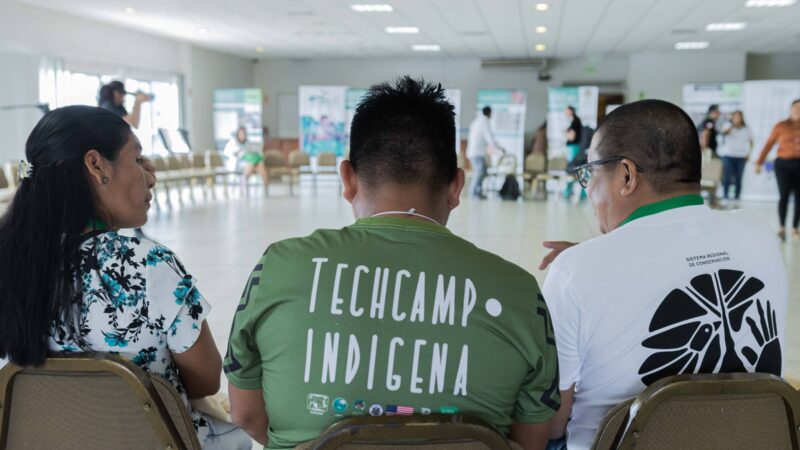
New Alliances:
- Three Indigenous organizations gained access to scholarships and technology donations through new partnerships.
- Fifteen partnerships established between Indigenous peoples, donors, and/or academic institutions now have defined roadmaps for moving forward.
- The Federation of Indigenous Peoples of Apayacu was incorporated into the list of Indigenous partners benefiting from territorial protection interventions.
- This collaboration extends the protected forest area as it’s adjacent to the Regional Conservation Area of Apayacu.
Support for Community Patrols:
- For the next six months of monitoring, we will distribute more than six tons of food to Indigenous monitoring patrols.
- In our ongoing commitment to safety, we have also equipped the Indigenous patrols with the necessary safety equipment, enhancing their protection during their monitoring activities.




